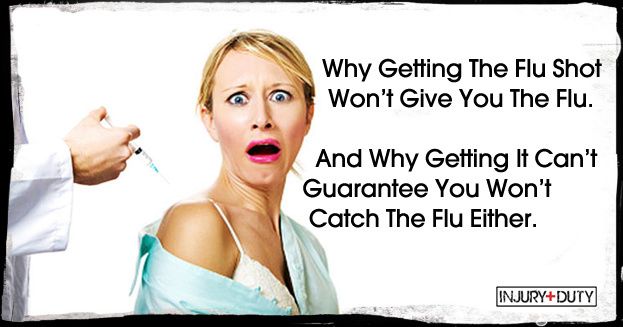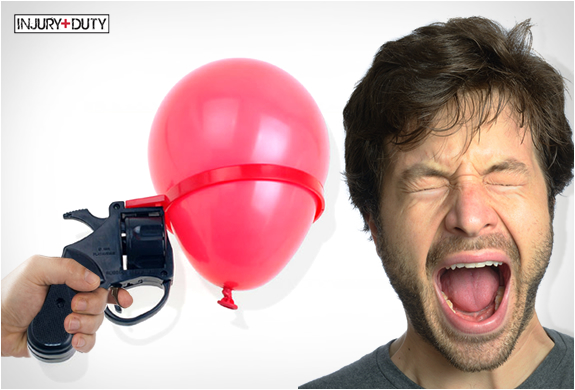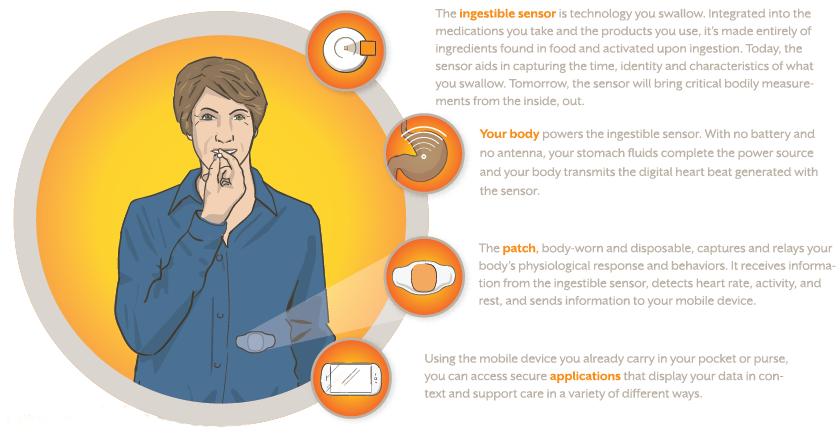#healthid
Maybe you’ve heard, in a recent interview actor Michael Douglas claimed that his throat cancer was caused by oral sex, something that a lot of people immediately wrote off as “crazy talk”. But, for theInjury-Duty faithfuls, you all might recall an article we published back in August of 2012 titled: “Herpes Isn’t The Only Oral STD You Should Be Concerned About”.
In that article we shared with you that the Human papillomavirusorHPV (a virus proven to be linked to cervical cancer in women) is believe to play a significant roll in the increasing number of people developing oral (mouth/throat) cancer.
So, as much as we’d like to ride Mr. Douglas for being just another aging Hollwywood celeb gone wack-a-doo, he’s actually not saying anything all that nutty (something that the reporter conducting the interview obviously felt when he started laughing after Douglas said what he did). Now, does this mean that his particular case of throat cancer was in fact caused by HPV? We’d obviously have no way of confirming nor denying that claim without seeing the test results for ourselves. But, according to researchers and doctors in the field, is it possible, yes.
This all kind of makes you feel bad for his wife (Catherine Zeta-Jones) doesn’t it? Because, if she doesn’t have HPV then who… ah you know what, we don’t want to kick up anymore dust for the guy. Here’s the audio clip of Douglas nonchalantly sharing his health news with a reporter (click here). If you’re unable to check out the audio, here’s what he had to say:
“Without getting too specific, this particular cancer is caused by something called HPV, which actually comes about from cunnilingus.”
Well, to all the fellas who have been looking for that ironclad excuse to not go downtown… this one might buy you some time.
According to the calendar, spring is supposedly in the air. I don’t know about the rest of y’all, but I can still see my breath when I go outside every morning. My crate of flip flops is still stuck in my closet waiting to be used. And I can drive with the windows down for exactly 30 seconds before the wind gets too damn cold for me and I have to roll ‘em back up. Weak.
Even though it doesn’t feel like spring yet, it’s officially here. And if that’s the case, that means Memorial Day aka the unofficial start of summer is right around the corner! That means beaches, backyard barbecues, backpacking, and bathing suits!
Bathing suits. Ugh. If you’re like a good chunk of the population and spent Winter huddled up indoors, under mounds of blankets, avoiding the frigid temperatures any kind of attempt at shoveling, chances are you might be a little rounder around the edges. Or you might be the kinda person with a ridiculously fast metabolism that burns calories in their sleep. In which case, I hate you. Kidding. Only slightly.
But I digress. Bathing suit season is around the corner and if you’re gonna rock a one piece, or a two piece, or swim trunks for that matter, chances are you wanna look good doing it. Now if all of us were born with that perfect bathing suit bod, there’d be no point to writing this article. But since we’re not, we at Injury Duty wanted to offer you some tips to help you put your best food forward.
Now you can make like Fergie and be up in the gym, working on your fitness. That’ll certainly help you drop pounds and tone up. But a proper diet goes hand in hand with exercise when it comes to making a difference in how you look. You can choose to diet and eliminate all the high fat, high carb, processed foods and that’s a pretty solid way to shed some unwanted pounds. BUT, you can also choose to incorporate some very specific foods that help your body burn fat more efficiently. That said, we bring to you five foods and/or beverages that’ll help you kick your metabolism up a notch and burn fat.
1. Chili Peppers- The next time you’re whipping up something spicy in the kitchen, feel free to turn the heat up a notch by adding chili peppers to your dish. Although not for the faint-hearted (or the bland-tongued), chili peppers to do a lot more than set your tastebuds on fire. A study done at the UCLA Center for Human Nutrition showed that chili peppers contain a compound called capsaicin which helps the body burn fat at a faster rate and may help boost metabolism. Habaneros are particularly full of the stuff. So put down the hot sauce and add the real stuff and you may be pleasantly surprised.
2. Green tea- Swap your quadruple mocha-choca-frappa-whatevertheheckitscalled-ccino at your favorite overpriced coffee chain for a venti green tea. Green tea contains a compound called EGCG which is thought to be a potent anti-oxidant and metabolism booster. Some opponents argue that green tea doesn’t do much in the way of fat burning, but even in that case, it’s a helluva lot healthier than all the sugar, caffeine, and carbs in your quadruple-ccino. Brew a pitcher of iced green tea and keep it handy. 4-6 cups a day works best.
3. Whole grains- Put down the doughy mass of goodness that is your daily bagel and reach instead for products made out of whole grains- like quinoa, brown rice, and oatmeal. Because whole grains are high in fiber and come to you in their most organic form, the body has to work harder to break them down to digest. In contrast, processed foods slow the body’s metabolism down because it doesn’t have to expend as much energy to break them down. You can eat to make your body work harder? Sounds like a win-win to me.
4. Greek yogurt- this might be the best thing to come outta Greece since the gyro. Kidding. Kinda. Greek yogurt is chock full of proteins which is great for many reasons. If you’re looking to put on some muscle for bathing suit season, increasing your protein consumption will definitely help. Furthermore, Greek yogurt has twice as much protein as other yogurts, which means you stay fuller longer after eating it. Like whole grains, the body burns off more calories when its digesting protein, making Greek yogurt an excellent choice! Bonus- it’s also full of calcium which promotes strong bone health.
5. Water on the rocks- Anyone who is trying to lose weight will always be told to drink lots and lots of water. Why? It’s simple. For one thing 2/3 of your body is comprised of water, so it’s important to constantly stay hydrated. More than that, drinking water will keep you full and less likely to reach for temptations. In fact people who frequently feel hungry and subsequently reached for food are actually encouraged to drink a tall glass of ice water first, lest the hunger pangs actually just be thirst pangs. The “ice cold” part is key because the body has to expend energy to warm the water up to your body temperature.
-Team [Woman] Injury-Duty
If you’re a fan of hip-hop, or maybe just a hater of rapper Lil Wayne, chances are you heard all about him being hospitalized a week or so back after suffering a seizure or two. And, in classic hip-hop-hype fashion, rumorville went crazy with stories ranging from Wayne was in the ICU, on his death bed and ready to meet his maker, to he was doing just fine in his hospital bed watching the Syracuse game. Up until this past Friday only one thing was for sure, Wayne was in the hospital for a bit and he didn’t die.
The speculation as to what caused Wayne to have the seizures that eventually landed him in the hospital were a whole other source of gossip. Was it weed? The molly? Nah, had to be the sizzurp he was drinking. No, no, he’s just “working too hard”, that’s gotta be it. But, on Los Angeles radio station Power 106, the rapper did his part to address rumors, attributing the seizures to his epilepsy:
“Like, this isn’t my first, second, third, fourth, fifth, sixth, seventh seizure. I’ve had a bunch of seizures, y’all just never hear about them. But this time it got real bad ‘cause I had three of them in a row and on the third one, my heart rate went down to like 30 percent*. Basically, I could’ve died, so that is why it was so serious. But the reason being for the seizures is just plain stress, no rest, overworking myself.”
Ah, if it were all only that simple, Lil Weezy. But, we know that’s why y’all are here, so lets jump in and make some sense of this mess!
THE BASICS: We think it may be helpful to understand what exactly a seizure is before we dive too deep. So, try thinking of the brain as your personal computer, or laptop. In your computer are a bunch of wires with electricity flowing through them. And, believe it or not, in your brain you have electricity flowing as well (literally), but in your brain the “wires” are known as neurons.
Now, you may have noticed that every once in a while when you try to do too much on your computer (for example when you have too many programs opened at once, plus you’re trying to download some file at the same time), your computer will “spaz out”. Sometimes the screen will freeze up for a minute, other times your mouse won’t work for a few seconds, and sometimes it’ll just shut down and reboot! It all depends on where the “hiccup” took place in your computer, and if it can figure out the problem.
Well, our brains are very similar to the computer in a lot of ways. There is a constant flow of electricity firing through the neurons in our brains, even when you’re not “using it” (i.e while sleeping)… which is more often the case for some people than others. Just like your computer, your mind gets revved up when you’re using your brain to do more complex activities, for example when you’re stressed out and have a ton of thoughts racing through your mind, or when you simply get excited and are feeling great. All those feelings cause all sorts of different parts of your brain to fire off electrical signals, but how well our brains handle those huge waves of electrical signals varies from person to person.
Ever notice how some people get excited and instantaneously start to cry? Some people get lightheaded when they’re upset and need to sit down. Others may get headaches if they’re watching a movie with too many explosion scenes. And, some people have seizures if they watch a movie with too many flashing lights. In most cases it all has to do with how the person’s brain processes the information and signals it is taking in, and whether their brain is able to not be overwhelmed by it all. The brains “ability to not be overwhelmed” is what brings us to the main point of this discussion: Seizure Threshold.
SEIZURE THRESHOLD:For the most part, our brains are wired the same way. But, much like our computer analogy, we know that despite looking the same, computers differ in what they can do. The brain is similar in this respect. Our brains are constantly processing information and that information “travels” from place to place in our brain, in the form electricity. The more excitement, information or emotions racing through your brain, the more electricity it calls for.
Taking a look at our diagram below, you’ll see the gray area labeled “brain activity”, this just represents the “work” you brain is doing. The blue line represents the level of “brain work” most people would have to reach before they tipped their brain past its breaking point (i.e. their “seizure threshold”) and suffered a seizure. The redline is the threshold of a person who is already prone to having seizures. If you already have epilepsy (like Weezy does), the level of “brain work” that it takes to reach your breaking point is already pretty low. Now, if you take a look at the purple line, you’ll see that the threshold drops even lower for people using/abusing certain substances (which we’ll talk about next), making it “easier” for them to have seizures.
BREAK ON THROUGH: Each and every one of us has a seizure threshold, but there are two things to keep in mind about them:
1. We do not all have the same threshold levels.
2. Our threshold levels can be moved (up or down).
There are medications that people can take to help raise their seizure threshold (i.e. make it “harder” for them to have a seizure), and we can only assume Wayne is being treated with one of those meds.
But, we can also assume that he is a fan of the stereotypical “hip-hop party lifestyle” being portrayed in most of his videos and rhymes. So, lets take a look at things that may actually be lowering this dudes seizure threshold:
A) Molly: This is the more pure form of its sister drug, ecstasy (in nerd-speak, the name is 3,4-methylenedioxy-N-methamphetamine [MDMA]). It’s hard to do actual scientific studies using “illegal” drugs in the United States, but based on animal studies, and the data collected from people that show up in the hospital after a bad trip on molly, the science shows that using molly can not only cause otherwise “normal” brains to have a seizure, it can actually permanently lower your sezure threshold, making you more likely to have seizures in the future, even when you’re not using the drug.
CONCLUSION: Poppin’ mollies raises the risk that you might be poppin’ and lockin’ (and not in the b-boy sense) forever.
B)Sizzurp: This little home-brew calls for one part promethazine/codeine syrup, some purple-drank(orMountain Dew, if ya want to get fancy), and your favorite flavor of Jolly Rancher, for that smooth after taste. And, as we’re pretty sure you’ve gathered, the purple drank and the Jolly-Rancher aren’t the main offenders in this mix. Promethazine is an anti-histamine drug and is most often prescribed for its sedative properties (aka tranquilizer like effects). Problem with it? You guessed it; this stuff mos-def lowers the sezure threshold. As for the other ingredient, codeine, this is mainly prescribed for its strong sedative and pain reliever effects. If you’re looking to slow down your breathing and heart rate, as well as drop your blood pressure to dangerously low levels, go’head, drink up because that’s exactly what too much of this stuff will do.
CONCLUSION: Tired of waiting for your next epileptic seizure to happen? Try sippin’ on some seizure-urp.
C)Stress / Lack of Sleep: There is absolutely no doubt that lack of proper rest and high levels of stress can lower a persons seizure threshold. And, if you’ve paid any attention to Wayne’s career, there is no doubt that the dude is constantly on the move. But, unlike the substances we’ve mentioned above, it’s hard to not get stressed out. That being said, staying well rested and staying away from things that may lower your seizure threshold are probably two good bets to staying out of the seizure zone.
CONCLUSION: Get your rest on.
D) Alcohol: From the best we can tell, drinking alcohol in small amounts (1-2 drinks per day) usually does not lower a person’s seizure threshold. Even those with epilepsy should be allowed to drink alcohol in limited amounts. There are exceptions though, of course, like those with a history of alcohol abuse, or a history of alcohol-related seizures. The other thing to keep in mind here is that the most serious risk of seizures in connection with alcohol use is when a chronic boozer hasn’t had a drink in days and finds themselves in withdrawal, that is “the hangover” period. This can last up to 7-9 days after the last drink.
CONCLUSION: Be easy with the get-loose-juice.
E) Marijuana: According to several research studies over the past fifty years in both humans and animals, marijuana may have ANTIconvulsant properties, which means that they may actually prevent seizures. Yup. In fact, there have been accounts from the 15th century (back in the day-day-day) of marijuana being used to treat Epilepsy. A study by Columbia University actually showed that marijuana had a protective effect against first time seizures in men.
CONCLUSION: Puff, puff, pass… if you’ve been properly diagnosed by a medical professional, are being managed by a licensed physician and you live in a state where the use of medicinal marijuana is legal, of course.
Injury-Duty Insight: Yes, we’re sure there are a ton of drugs, both prescribed and not so prescribed that could have played a role in Wayne’s recent hospital stay, but we wanted to be fair and only address the stuff he’s most recently “told us” he’s been gettin’ into as of late. As for our professional recommendation, we’d advise less emphasis on “keepin’ it gangsta” and more emphasis on “keepin’ Wayne alive”.
-Team Injury-Duty
*We’re pretty sure he meant 30 beats per minute, not 30%. Just wanted to clear that up. And, unless you’re an elite athlete, 30 bpm is not good.
Oscar “Blade Runner” Pistorius was the proverbial sports hero. As a child born with fibular hemimelia, a condition that left him without a fibula bone (one of the bones in the lower leg) in either of his lower legs, Pistorius proved himself to be unusual from day one. Having undergone below-the-knee amputations in both legs as an infant, Pistorius grew up on prosthetic legs. Always an athlete, Pistorius was a standout athlete is multiple sports in his native South Africa, until a knee injury during a rugby game sidelined him from the sport. Shortly thereafter, Pistorius began running as a part of his rehabilitation program, and the rest, as they say, is history. At the age of 17, Pistorius was given his first pair of flex foot Cheetahs (the now famous “blades”). He went on to the Paralympic Games in Athens the same year and won Gold in the 200m race. Four years later, in Beijing, he scored a hat trick coming back with Gold medals in the 100m, 200m, and 400m events. And of note, last summer, Pistorius successfully lobbied for the opportunity to compete with the South African team in both the Olympics and Paralympics. He came away with two Gold medals, two world records, and a new Paralympic record. Pistorius was hailed as a role-model, a hero in his own right, and a pervasive example of how hard work and determination can help one overcome the most trying of circumstances.
More recently, Pistorius has achieved a less favorable kind of notoriety, having been accused of the ghastly pre-meditated murder of his girlfriend, South African model, Reeva Steenkamp. While the finer details surrounding Steenkamp’s murder remain a mystery, what has been revealed paints two very different pictures- a tragic case of mistaken identity vs. a case of cold-blooded pre-meditated murder.
According to Pistorius, he and Steenkamp went to bed early on the night of the 13th. In the wee hours of the 14th, Pistorius woke up to close the sliding doors leading to his balcony. Upon returning from the balcony, Pistorius heard what he presumed to be an intruder in the bathroom. In his official statement to the court, Pistorius stated “I felt a sense of terror rushing over me…I believed that someone had entered my house. I was too scared to switch a light on.” In the darkness, Pistorius, who claims that at the time he did not have his prosthetic legs on, retrieved his 9 mm handgun from under his bed and made his way to the master bathroom. On the way he yelled for Steenkamp to call the police, never realizing the fact that she was no longer in bed. Upon reaching the master bathroom, Pistorius noted an open window and the door leading to the toilet room closed. Pistorius fired at the closed door blindly, in the dark, assuming that the intruder was hiding behind it. He again shouted to Reeva to call the police but noted she wasn’t responding. When he returned to his bedroom and noticed that she wasn’t in bed, it dawned on him that Reeva was in the toilet room. Upon noticing that the toilet room door was locked, Pistorius put on his prosthetic legs and attempted to break the door down using a cricket bat. When he finally reached Steenkamp, she was alive, but barely. Pistorius contacted emergency personnel and attempted to carry Reeva down the stairs to bring her to the hospital, but she succumbed to the injuries dealt by bullet wounds to her head, chest, pelvis, and hands and passed away in Pistorius’ arms.
The prosecution paints a vastly different picture of the situation. Witness reports indicate continuous arguing coming from Pistorius’ house between the hours of 2 and 3 am. Lights were also said to be on Pistorius’ bathroom before gunshots were heard. Prosecutor Gerrie Nel suggested that Steenkamp fled and locked herself in the toilet room during her argument with Pistorius. Pistorius then put on his prosthetic legs and retrieved his gun to shoot Steenkamp in the toilet in an attempt to resolve the argument. Ballistics studies appear to confirm this, revealing that the trajectory of the bullets was such that they appear to be shot from a higher point- that is to say; Pistorius had already put on his prosthetic legs when he shot Steenkamp. A more curious finding was that of vials of testosterone and boxes of syringes in Pistorius’ apartment. Although Pistorius was immediately subjected to blood and urine testing, there is now rampant speculation that Pistorius was using testosterone to improve his athletic performance and that “roid rage” may have fueled his unnaturally aggressive behavior resulting in Steenkamp’s untimely death.
As almost everyone already knows, the use of steroids including testosterone and its synthetic derivatives is not uncommon amongst competitive athletes in an effort to improve athletic performance. The World Anti-Doping Agency has banned over 100 performance-enhancing drugs from being used, but many athletes don’t necessarily pay attention. Testosterone, a naturally occurring compound in both men and women is one such frequently used drug. As the male sex hormone, testosterone has both androgenic and anabolic effects; responsible for the development of male sexual characteristics and also for the growth and development of muscle mass, respectively. Synthetic derivatives of testosterone such as stanozolol and nandrolone are also used. These synthetic forms are referred to as anabolic steroids and are often the more popular choice due to their more powerful effect in building muscle mass. Yet another popular compound is DHEA (Dehydroepiandrosterone), which is frequently marketed as a nutritional supplement used to increase muscle strength.
The human body produces a regulated amount of testosterone based on a variety of factors unique to each individual. Logically then, it follows that taking higher than normal doses of testosterone increases both muscle mass and strength. Therein lays the dangerous allure of anabolic steroids. In an attempt to achieve a quick fix or perhaps amp up their performance for an upcoming competition, athletes frequently turn to steroids as a means with which to gain a competitive edge.
However, what frequently goes unmentioned are the dangerous side effects to prolonged steroid use. These include decreased sperm production and fertility, increased cholesterol levels, liver cysts, and tendon ruptures. Perhaps one of the more widely known side-effects is that of ‘roid rage- unprovoked, overly aggressive and paranoid behavior as a result of increased androgen levels in the body. There aren’t many formal research studies on the phenomenon of ‘roid rage. In an informal study of 160 men surveyed at gyms, mood disorders and aggressive behavior were more common amongst steroid users. Analysis of data from the National Longitudinal Study of Adolescent Health which consisted of over 20,000 participants and found that steroid users were twice as likely to engage in unprovoked, violent behavior. Though the precise bio-chemical pathway for ‘roid rage has not yet been discovered, there is some speculation that steroid users contain lower levels of the brain chemical serotonin in areas of the brain that control aggression and violence. In a recent Time Magazine article, authors referenced a study done by researchers at the University of Guelph in Ontario. In animal studies, they found that mice with high testosterone levels were found to also have lower levels of BDNP, a hormone that controls depression and inappropriate reactions. Therefore, increased testosterone levels may be implicated in unusually aggressive and impulsive behaviors.
It is difficult to say Steenkamp’s murder was due to a tragic case of ‘roid rage. While anecdotal evidence for instances of ‘roid rage is widespread, there are few, if any controlled research studies that fully support the link between excessive steroid use and aggressive behavior. In fact, a study of 50 men published in the New England Journal of Medicine concluded that there were no observed differences in mood or anger levels amongst experimental and control groups. This suggests that the effects of steroids can vary widely between individuals. Furthermore, according to Slate Magazine, there have been many accounts that Pistorius was, at his baseline, a jumpy, overly energized individual with a constant stream of paranoia running through his blood. Coupled with the fact that South Africa has one of the highest crime rates in the world, it is not unusual for South Africans to arm themselves. Pistorius stated that he had been the victim of violence and robberies before, so it is not an entirely surprising thought that Pistorius would be overly vigilant about guarding his home and his loved ones when he perceived trouble. The truth remains to be seen.

Everybody is talking about it. It’s shaping up to be one of the worst flu seasons in years. And, with all the commotion It never fails, we hear it every year-“Nah man, I don’t mess with the flu shot! The last time I got it, it gave me the flu!” Or, the always classic “Why would I get that shot again? Last year I got it, and still got the flu!”. With that being said, we decided to sit down and put together a short article on why getting the flu shot won’t give you the flu, but also why it can’t guarantee you won’t get it either.
THE BASICS:Without getting too “sciency” on you, lets talk about the flu shot itself. When you get a flu shot, what you’re actually getting is what’s known as a “dead virus”, which means the virus in the shot is, well, dead. “There is simply no way that the flu vaccine can give you the flu,”saysChristine Hay, MD, assistant professor at the University of Rochester Medical Center. “It’s impossible” (we’ll explain why it’s impossible later).
“WHERE MY DOGS AT?”: At this point, you’re probably wondering to yourself, if what’s in the flu-shot is “dead” then what’s the point of getting it, right? Fair question, and here’s a simple way to think of it. Your body has its own defense against “intruders” (i.e. your immune system), you can think of these as guard dogs, running throughout your body, attacking suspicious looking characters who might otherwise do you harm. These guard dogs have been trained to sniff out your run-of-the-mill “home intruders”, so most of the time when an intruder (playing the role of a virus in our scenario) tries to make its way into your body, your dogsare on the prowl and ready to handle your dirty work!
There’s only one problem in this hypothetical scenario. Every year the home intruders get a little more clever, and they switch things up. Maybe they ditch the ski mask, its too obvious. Instead, this year they decided to roll with the hoodie instead, it’s a little less suspicious. Now imagine the intruder makes his way inside your house, and it isn’t until he starts wrecking shop that your guard dogs realize “Aww snap! We have a problem here!” at which point they jump into action and try their best to control the situation. But, they’re a little late to react to the intruder (they didn’t know what to make of their new disguise at first), and he was able to break a few things and got away with some property.
Granted, the dogs eventually sprung into action, but the damage had already been done. They only upside to this scenario is that if the home intruders come around again, dressed similarly to the recent intruders (i.e. wearing hoodies), your dogs will be ready to spring into action.
FLU-SHOT IN TRAINING: What the flu shot does is basically offer up “training” for your guard dogs. The three most common “looks” for home intruders in your neighborhood are identified, rag-doll versions of them are made, and dressed to look exactly like them. The dogs are then introduced to the rag-doll intruders, and trained to attack them on sight! Even if it takes them a little while to be trained (just like it takes the flu shot a few weeks to “kick in”), it’s okay because the rag-dolls pose no threat, they’re not real, just as the dead virus in the flu-shot is not a threat.
The idea is this: Now that the guard dogs know what they’re looking for, if and when the actual intruders show up, there will be little to no delay in attacking, and shutting them down! With no time to wreck shop, the bad guys stand little chance to do any harm to the home or the people inside!

SO, WHY DID I STILL GET THE FLU LAST YEAR?: Now that you (hopefully) have a little better understanding of why we get flu shots, and how they work, lets talk about why some people still get the flu, despite having received their shot. One explanation is simply that (again, continuing with our guard dog and home intruder analogy from above) the home intruder was not dressed like one of the three included in the vaccine. Makers of the the flu-shots do their best to identify the top three strains they think will most likely be infecting people in your area. However, there is no way they can possibly account for allof the flu strains (just like it would be impossible to guess what everypotentialhome intruder would look like). But, life is all about percentages and odds, so the idea is to stack the odds in your favor: If you’re at risk for catching the flu (which we all are), here are the most likely critters to get you, and here is a vaccine against those strains. It’s that simple.
A more obvious explanation can be that you were exposed to the flu virus before you received your shot, or in the two weeks it takes for the shot to start protecting your body. Lastly, some people just love a good conspiracy theory, and at the first sign of a sniffle or a cough, will mistake their symptoms for the flu instead of what it actually is, a simple cold.
Injury-Duty Insight:There you have it. Now you know how the flu shot works, and even why it sometimes doesn’t. Keep in mind that flu seasonin the United States tends to start around November and continues to peak all the way through April, so there’s plenty of reason to still go out and get yours, should you want it. Also keep in mind that children (over 6 months) and elderly (over 65 years old) should be first in line to get their shots, because the babies, well their guard dogs are just puppies (they need all the training they can get!) and the older folks, well their guard dogs don’t react as quickly as they used to, so they need all the head-start they can get!
(Like What Found Here? Have Comments, Questions? Concerns? Visit Out Injury-Duty Facebook Page of Follow Us On Twitter @Health_ID)
Sources:
1. Christine Hay, MD, assistant professor, University of Rochester Medical Center, Rochester, N.Y.

“Kids are crazy these days”, we’ve all heard it before. I’d even put money on the fact that some of you catch yourselves saying it from time to time (those of you that are parents anyway). I tend to shy away from saying things like that because, to be very honest, I did some pretty stupid stuff myself when I was young. Like, ridiculously stupid. But, for the most part, people considered me a “good kid”. I listened to my mom (while she was watching), I got descent grades, I respected my elders, all the basic stuff. But at the same time, even today, if my poor mother knew some of the crap I was pulling when I was a kid… lord. Lets just say she’d probably be very disappointed in me. Hell, when I look back on those days I’m often disappointed in myself!
Which brings me to the point of this week’s article. Imagine this scenario (which may, or may not have actually happened…): A colleague of yours confides in you that she recently visited her son who was alway at college. She had braced herself for the worst, a filthy bedroom, moldy shower corners, spoons stuck to plates jammed underneath the couch. You know, gross guy stuff. Instead while helping clean up her son’s apartment, what catchers her attention is a toy gun. It didn’t have a barrel, but it had a handle and a trigger, but this toy-gun was just so odd looking, so she had to ask him what it was. “It’s a party roulette gun, mom. It’s a pretty sweet game!” her son answers. What happens next is an explanation of the game: Party Roulette.

The “rules” of the game are simple:
1. Pass the Party Roulette Revolver (with a balloon in place) to a friend.
2. Your friend cocks the hammer & then pulls the trigger (hoping they can take their shot without popping the balloon).
3. If the balloon doesn’t pop, the Party Roulette Revolver gets passed to the next person.
Onewebsite goes on to suggest:
“It’s just like Russian Roulette, except that the unlucky person will only have a water balloon explode on his face. Or you could fill up the balloons with pig’s blood; that way someone – i.e. you – will still end up looking dead.”
Your first reaction to this “game” is likely something along the lines of “Eww. That’s not good”, which is exactly what I said to myself when I learned about it. But, taking a step back I asked myself, “is this game just in poor taste or is there something more than that to the story?” I mean think about it, sure suicide is obviously no laughing matter, but it isn’t like this is a “gateway game”, right? Surely nobody is going to play this game and have it be the reason they actuallywent out and played Russian Roulette (RR) with an actualloaded gun, right?
Then the nerd in me kicked in, and a few minutes later a quick search through the medical literature turned up a very interesting paper titled Race, Urban Context, and Russian Roulette: Findings from the National Violent Death Reporting System, published in the The American Association of Suicidology. The paper looked at 71 RR cases and compared that to a group of 284 (the “control group”) males who committed suicide by a gunshot wound to the head. And, when compared to the “control group” what they found was that RR suicides were:
- More apt to be African American or Hispanic.
- More apt to be younger.
- More apt to be single/divorced.
- 49.3% of the RR suicides tested positive for alcohol compared to only 22.9% of the control group.
- Only 2.8% of the RR individuals experienced current treatment for psychiatric conditions (e.g. depression) versus 18.0% of those in the control group.
Now, my goal isn’t to have parents freaking out, and rushing in to their kid’s bedrooms looking for toy guns. And, it’s only fair to point out that RR is actually an extremely rare behavior. There were 71 RR cases (of 30,593 reported suicides, from 17 states over 4 years), that’s just 0.23% (less than 1%) of all suicides. Point is, RR is not the new that thing all the cool kids are doing.
However, and maybe it’s the “kids are crazy these days” side of my brain that is making me think this, but kids/young adults drinking alcohol at a party with a bunch of other kids just seems like the perfect storm for some drunk dummy to whip out some real steel and say “Oh yeah, think you’re tough?! Lets go, for real!” (or something made for a TV drama that sounds way more “tough” than that, but you get my point). Without knowing anybody that has actually played this game, I can only assume those who do play are a “few fries short of a Happy-Meal” to begin with anyway. Why would I say that you ask? Just check out the “Customers Who Bought This Item Also Bought” section on Amazon.com when you pull up Party Roulette. That’s right, items included:
- Offensive Business Cards
- “Thug Life” Temporary Tatoos
- Party Pooper Fake Human Poop
- Barbuzzo Spin-the-shot
See what I’m saying?
I’ll leave you with this, maybe Party Russian Roulette is just a harmless, albeit tactless, game. Maybe. But, life is about percentages and odds. Odds that you’d like to stack in your favor whenever possible. For that reason alone, perhaps it may be worthwhile to have a talk with the loved ones/ young ones in your life about this game (and any game like it) that may attract a certain kind of crowd, a crowd that it may make sense to stay away from. Also, remind them that those who reach out for help in “bad times” are a lot less likely to attempt and/or commit suicide.
The authors of the study also speculated that RR may actually be serving as a more “culturally legitimate” way to commit suicide among members of a cultural group that take a strong stance against suicide (Black and Hispanic men are about half as likely to commit suicide when compared to Whites, while Asians and Native Americans have the highest suicide rates). They suggest that while suicide can be culturally defined as unacceptable, RR might be viewed as more of a “gamble”, and in some strange way a gamble with death may be viewed in a subculture as heroic.
At the end of the day, the facts are 1) Party Roulette is game gaining popularity amongst young adults and 2) of those who unfortunately do commit suicide via RR, a disproportionate amount of them are Black and Brown young men. Now, what you decide to do with that information, well, that’s up to you.
-InjuryDuty Health
[ Questions? Comments? Concerns? Spotted a typo? Hate our work? Whatever the case, we’d love to hear from you so drop us a line!]

Noncompliance in medicine is just fancy talk for “That patient doesn’t follow instructions very well.” And, for the most part, when a patient doesn’t do as they’re advised they generally think they’re “not hurting anybody but themselves”. Which is true, except when it’s not.
For example, patients with infected with tuberculosis (TB) that is resistant to multiple drugs often need to be treated foryears with very specific (and often times very expensive) medications. It’s important these particular patients stick closely to their medications because TB can be spread as easily as breathing in infected aerosolized droplets (those are the tiny balls of spit and what not that we all launch into the air every time we cough or sneeze!). What was “just one patient” can easily become a whole lot, all because some doofus decided he’d skip a day.
Digital Pills: The way these pills are said to work is simple, in theory. The microchip is roughly the size of a sand-particle and is made up of a tiny amount of silicon and even less magnesium and copper. Once swallowed, the chip would eventually reach the stomach- there the acid in your stomach would “activate” a small electrical signal and that small signal can then be picked up by your doctor with some sort of “scanner” on the skin over your belly (we’d venture to say Apple is probably working on an app for this as we speak).

As of now, the FDA, has only approved these microchips based on studies done using placebo drugs. Eventually, the makers of these chips hope to have them used in medicines that must be taken for years such as those for drug resistant tuberculosis, diabetes, and for the elderly with chronic diseases, according to the co-founder and chief medical officer of the company (Proteus Digital Health), Mr. George Savage (Mr. Savage, that’s really the guys name).
Mr. Savage’s take is that the point isn’t to have “Big-Brother” in you medicine cabinet, but rather “…to understand how people are responding to their treatments. This way doctors can prescribe a different dose or a different medicine if they learn that it’s not being taken appropriately.”
And, to be honest, he’s not completely full of hot-air. For example, if a patient is being prescribed Morphine for chronic pain and they are instead selling their pills to the neighbors, how would we as doctors know for sure? Or how about the patient who claims that their pills were in their check-in bag and the airline lost their bags? Now they need an ‘emergency refill’, when in fact they’ve downed all their months supply for the high? Both are very real scenarios, which are often the beginning of a prescription addiction/abuse story. It’d be great to have a way to confront a patient and say “Look, we know what’s going on, and we’re here to help before the problem gets out of hand.”
But, this story has too many openings for a great sci-fi movie or even better, a government conspiracy theory! Here are a few words that are all the fuel needed to have people worried (…and I can’t blame them, I mean who doesn’t love a good conspiracy theory?!):
- Silicone.
- Digestible microchip.
- Magnesium.
- Copper.
- Scanner.
….So for now, Mr. Savage, we’ll pass on this one.

“Some of y’all wont have sex without a condom. That’s good. But you’ll gladly go down on somebody? See…I don’t get it. Because now, you done ATE the disease.”
-Unknown Comedian
Get this, despite the recent drop in use of tobacco products, oral cancers (which include cancers of the tongue, tonsils and the back of the throat) are on the rise. This is a little surprising, because use of tobacco products has been the #1 cause of these cancers for a while now.
What’s behind the rise? The Human papillomavirus or HPV (a virus proven to be linked to cervical cancer in women). Yup, many scientists now believe that the growing popularity/practice of oral sex is behind the jump in the number of people developing oral cancer.
Steven Gill, Ph.D., associate professor of Microbiology and Immunology and a scientist in the Center for Oral Biology at the University of Rochester Medical Center School of Medicine and Dentistry in Up-State New York is the man behind some of the current research being done and he had this to say:
“It’s possible that pockets of gum inflammation and tissue destruction in the mouth provide a reservoir for HPV, which the virus uses to infect nearby tissue. Other teams are studying the link as well. Recently in the journal Archives of Otolaryngology, scientists describe a possible association between oral inflammatory disease – chronic periodontitis or gum disease – and HPV infection in patients with head and neck cancers.”
Foul Mouthed: We’re not trying to ruin your next kiss, but here is a not-so-cool-party-fact: There are more than 800 types of bacteria living in the space between your lips and your throat. And that’s no typo. 800. But here’s the thing, they’re actually not allbad. In fact, most of them are there keeping other potentially dangerous bacteria “in-check”.
What To Do About It: Researchers are in the middle of taking a closer look at the bacteria in the mouths of those with oral cancers and comparing the findings with the “healthier” mouths of those without oral cancer. The goal is to hopefully find which bacteria may actually play a role in the development of some types of cancer.
Now, we’re going to say this, even though most of you will likely ignore it: Dental Dam. Read about it, use it (…we figured we’d at least try). In the mean time Dr. Steven Gill, Ph.D., stresses the importance of preventing oral inflammatory disease as a key way for helping to prevent an HPV infection of your mouth. Brushing and flossing your grill regularly, are easy steps to fight gum disease and increase the likelihood that the HPV virus doesn’t have any easy openings to sneak in through, and that the “good bacteria” aren’t overtaken by the “bad ones” in your mouth and throat.
So, get to scrubbin’ before you get to lovin’!





